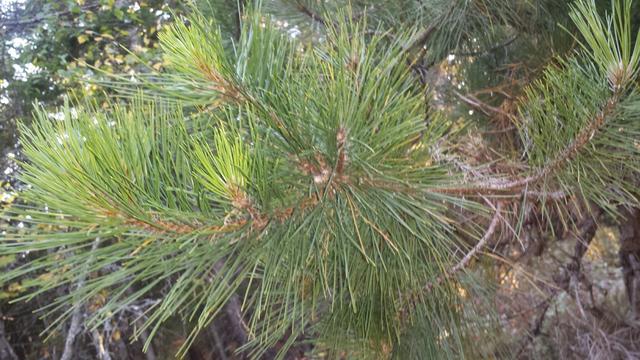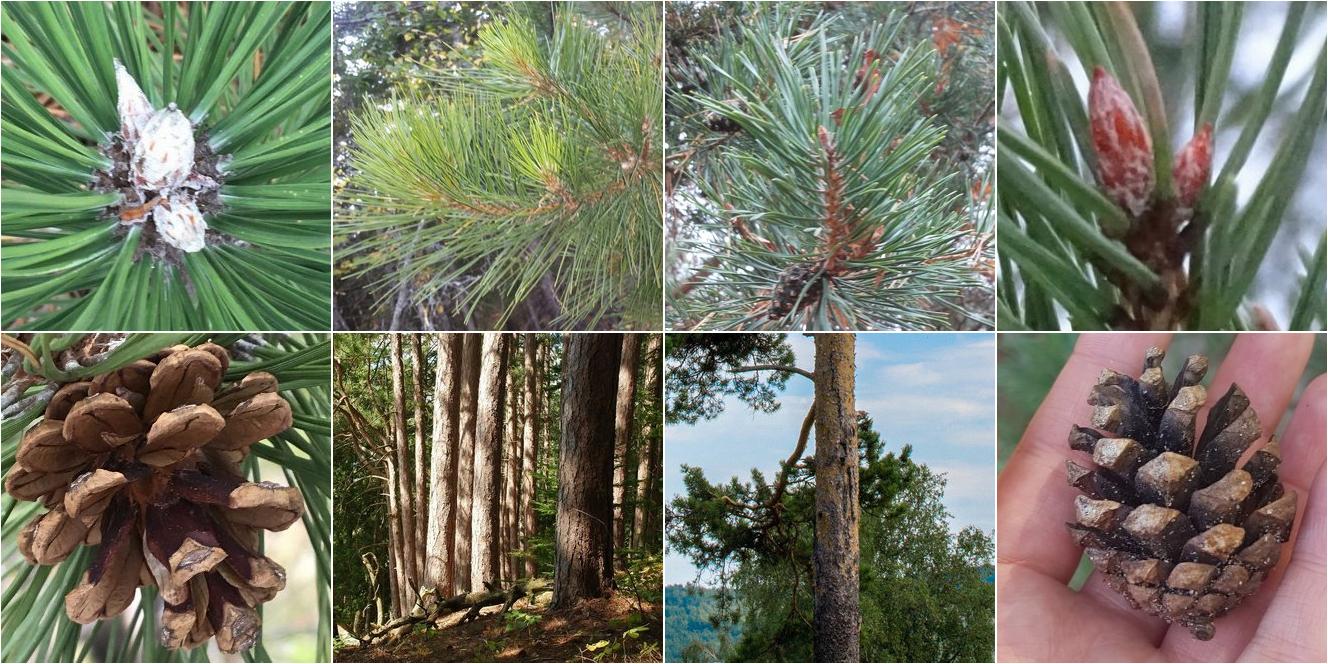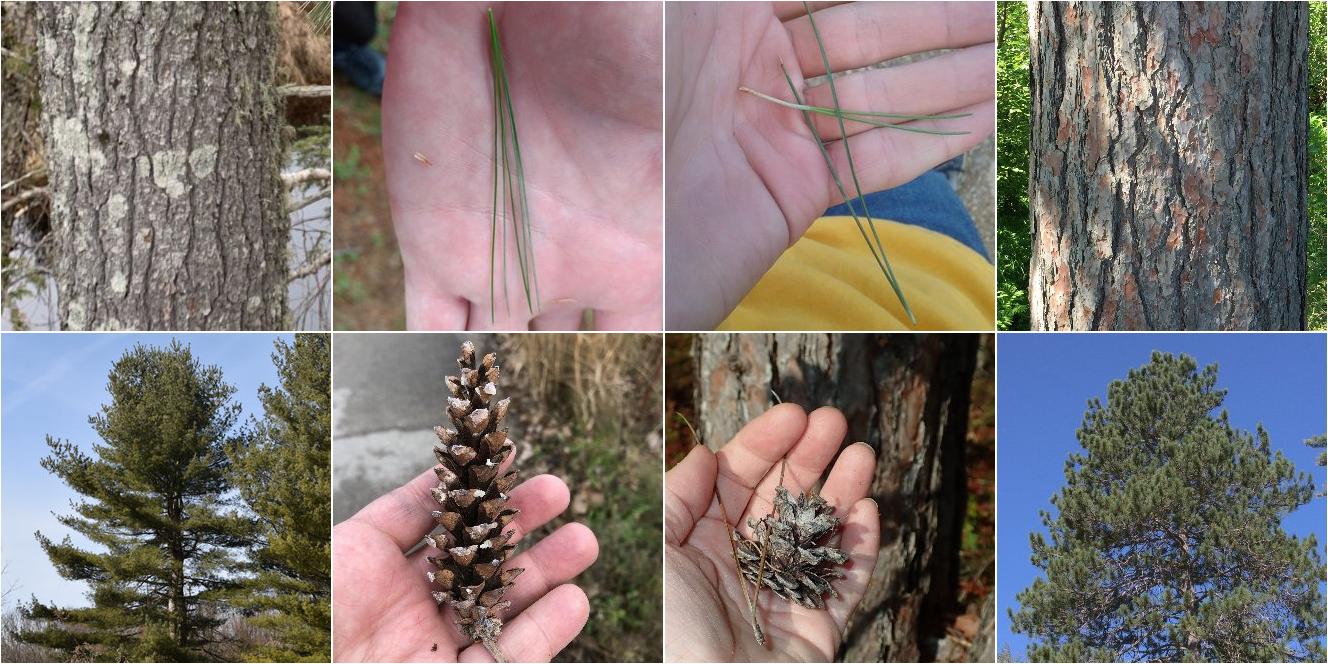Red Pine (Pinus resinosa) vs. Scots Pine (Pinus sylvestris)
Updated December 20th, 2021These species are sometimes confused because they both have reddish bark, but they can be easily distinguished by their needle color and length, and also by differences in bark color. The cones are similar in size and both have scales that usually lack prickles, but the scales have a different shape at their tip. Their habitat preferences overlap, with both frequently found on sandy soils, but Scots pine is also found on boggy sites and in anthropogenic habitats where red pine is not usually found. Both species are planted in plantations, but only Scots pine is widely used in landscaping.





